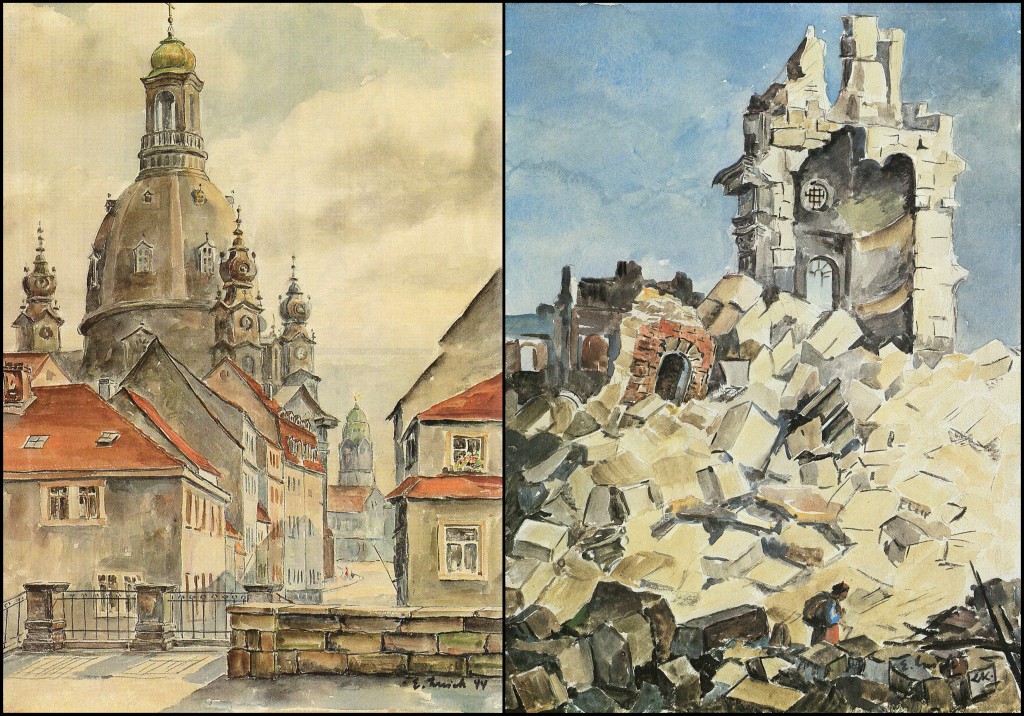The below exhibits are a joint project made possible by Spuren e.V. in Germany and TRACES Center for History and Culture (based in Iowa, USA), both of which use social history in order to facilitate historically-oriented understanding between people. Further information about POWs from both sides of World War II can be found at www.TRACES.org.
70 years after the Bombing of Dresden:
Beauty and Tragedy
This exhibit was on display from 15 February through 8 March 2015 in Galerie 13, Webergasse 13, 73728 Esslingen, Germany. Galerie 13 is open from 11 a.m. to 4 p.m. on Saturdays and Sundays. The opening took place at 11 AM, Sunday, the 15th of February 2015: Invitation
Galerie 13 regularly displays oils and watercolors of the German painter Eugen Luick (1908-1991). In July 1944 he went as a soldier armed with a paint-box to Dresden and captured the beauty as well as the destruction of the unique cityscape in his pictures. At the same time, ten thousands of prisoners of war were at Dresden; their history told in a supporting exhibit available on loan from the American educational non-profit organization TRACES and its German sister organization, Spuren e. V.

The below exhibit showed from 3 March to 24 April 2016 in Stadtmuseum Weimar (Karl-Liebknecht-Straße 5, 99423 Weimar; tel. 0049.3643.82600); for further information contact stadtmuseum@stadtweimar.de. From 19 March through 23 April 2015 the exhibit showed at the Center for American Studies (HCA) der Universität Heidelberg (Hauptstrasse 120, 69117 Heidelberg; Tel. 06221.543710) zu sehen. For further information: hca@uni-hd.de
Behind Barbed Wire:
German and American Prisoners of War
in World War II
In World War II the western Allies captured hundreds of thousands of German soldiers. They shipped some 380,000 of them to North America, where they were imprisoned in over 600 base and branch camps.
At the same time, about 90,000 U.S. American Prisoners of War were in the Third Reich, where they suffered as much as if not more than the German civilians among whom they found themselves.
In the nights of the bombing of Dresden—just before the war’s end—there were tens of thousands of Allied POWs, as well as concentration-camp inmates and German refugees in the Saxon capital. Immediately after the bombing, the POWs had the task of digging the uncountable corpses from the destruction of the famed “Florence on the Elbe” from mountains of soot and ashes, stack them in piles and burn them.
Before Kurt Vonnegut died, he worked with TRACES, an American non-profit educational organization, to tell once more the story that forms the core of his Slaughterhouse Five, which tells of his having survived the firestorm over Dresden, unleashed by his own compatriots.
Now the stories of German POWs in the United States, as well as those of American POWs in the Third Reich can be told in an exhibit form, titled Behind Barbed Wire (Hinter dem Stacheldraht). For further information, contact staff@TRACES.org.
